Read about the importance of fairy tales, how and why reading fairy tales benefits children’s development, and see a list of the best and most popular fairy tales for kids from toddlers to teens (with age-appropriate recommendations) in this informative article.
Reading fairy tales for kids is not just a great way to pass the time; studies show (and great thinkers of our time tell us) that reading children’s fairy tales is not only important for their intellectual and emotional development but can benefit the developing child in several other essential ways. Because fairy tales, oral stories, folk tales, and other myths and legends have been shared orally to help children develop self-understanding and mature into well-rounded human beings since the beginning of time. And in modern times, read-aloud fairy tales can continue to help children develop a love of reading, improve vocabulary, strengthen creative thinking, increase intelligence, and more!
So, this article begins with a brief explanation of the importance of fairy tales for kids, and how sharing oral stories and reading popular fairy tales can not only benefit–but help educate our children mentally and emotionally. And it concludes with a list of the best fairy tale books (with age-appropriate recommendations) for your home, homeschool, or classroom library for toddlers, preschoolers, kindergarteners, elementary school-aged kids, and teens. You might also enjoy this list of children’s picture books that teach important life lessons.
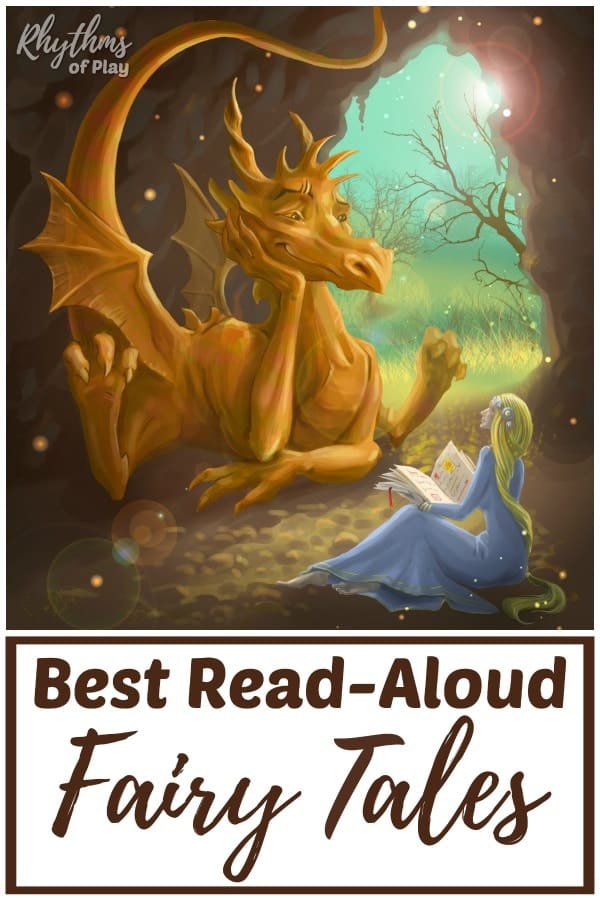
What are Good Fairy Tales for Kids?
A list of favorite fairy tales for kids is towards the bottom of this article. Scroll down to find age-appropriate fairy tales recommended for each age group. Toddlers, preschoolers, kindergarteners, elementary school-aged children, and teens have different needs, so we help you pick the best fairy tale book for your children or the students in your classroom. You might also enjoy this list of Parenting Books.
Importance and Benefits of Reading Fairy Tales for Children
Research studies prove that reading fairy tales aloud to children is an excellent aid for children’s mental and emotional development. Because they are one of the only types of literature that combine creative symbolism, simple archetypes, and spiritual concepts into stories that help children develop into creative, intelligent, and whole human beings.
As a transpersonal psychologist, I became familiar with archetypes, metaphors, and the patterns of the human psyche when studying Jungian psychology. But you don’t need to have a doctorate in psychology (or know anything about the psyche) to begin to understand the power that fairy tales can have as they help children grow and transform into imaginative, self-aware, and intelligent adults. You might also enjoy this list of self-regulation strategies for kids.
Importance of Fairy Tales and The Development of the Mind or Psyche
Not only can fairy tales help children develop intelligence and creativity, but they can also help them better understand their emotions, and strengthen their moral lives of children. But this takes time. The symbols and archetypes in fairy tales live inside children as seeds until they bloom years later in the face of adversity.
Related: Children’s Books About Anger Management from Toddlers to Teens
This is why I like to think of fairy tales as a fine wine woven of stories designed by our ancestors and sweetened by time to help us understand simple truths. Those who passed wisdom on from one generation to the next since the beginning of time. The knowledge of grandmas, grandpas, and those that came before them ad infinitum.
But fairy tales consist of metaphors and archetypes, not literal translations, so please don’t take them literally. Instead, view them as magical spells designed to unlock something deep inside. Something that is unknown until it is told and often remains unconscious. But once this magical wine of awareness reaches maturity, it blooms into the wisdom of experience.
How do fairy tales benefit intellectual and PSYCHOLOGICAL (Mental-Emotional) development?
Unlike their name suggests, fairy tales are not really about fairies. Instead, they usually share an exaggerated version of a struggle between opposing forces, such as dark and light. Or tell the story of a problem the main character or hero must face and how it is overcome within a metaphorical tale or short story.
As such, fairy tales are filled with lessons and stories of triumph that mirror the struggles that children face in their day-to-day lives. And listening to, hearing, or reading these fairy tales, myths, fables, and short stories helps them conquer their fears and keep going in times of hardship as they win battles alongside the main character or Hero’s Journey.
Fairy tales can also help children develop better critical thinking skills, and learn about the power of consequences. Because no matter how many times they hear it, the same thing happens to the main character, or hero, again and again.
So as children listen to the story and follow the main characters, they learn that what happens to them ultimately depends upon the choices they make. And this gives them the courage, strength, and resolve to face, endure, and overcome the challenges they face in their own lives. Are you beginning to see the magic of fairy tales for kids?
The Transformation of the Hero’s Journey
As children listen to these stories about a crisis or curse that ultimately leads to a transformation, they too, are psychologically transformed. And as children continue to work out the pieces of the story during play (and within the deep reaches of their imaginations), and as they hear it again and again, the moral of the story begins to help them develop into psychologically whole human beings–scary parts and all.
Because when children begin to understand who they are, they can learn what they are not. And this opens the space for intelligence to develop. When a child no longer has to discover who he or she is, he or she can begin to understand or learn about “the other.” And ultimately, these discoveries can help them reach an even deeper understanding of themselves–which is pure magic. You might also enjoy this list of books about emotions that help children understand their feelings.
Bruno Bettelheim’s Fairy Tale Research
Like Plato before him, Bettelheim believed that the literary education of children should begin with the telling of stories and myths. His book, “The Uses of Enchantment,” was the first study of how fairy tales can benefit child development and are based on Freudian psychoanalysis.
To “Know thyself” is the goal of psychoanalysis, and it is also one of the primary goals (and benefits) of reading fairy tales aloud to children. Because fairy tales can lead the reader (or listener) to a greater sense of who they are.
As a result, they are mentally, emotionally, and spiritually transformed along with the characters in each story. Even if that transformation does not occur until much later. Remember, a fine wine takes time. But that’s just part of the magic of fairy tales for kids.
If You Want Your Children to Be Intelligent, Read them Fairy Tales
Like Bruno Bettleheim, Albert Einstein also understood the brilliance of reading fairy tales aloud to children and touted his praise openly. He believed that hearing fairy tales, rhymes, and other short stories and fables orally paved the way toward intelligence and intellectual growth for young girls and boys.
“If you want your children to be intelligent, read them fairy tales. If you want them to be more intelligent, read them more fairy tales.”
~ Albert Einstein
Einstein believed the development of creativity the imagination were the keys to intelligence and intellectual development. As proof of this point, he was known to say that the necessary equipment of any real scientist was a “fully developed imagination.”
Einstein also said that reading fairy tales aloud to children was the fastest way to develop a child’s intellect. Because he believed children could learn to think creatively and develop their intellect as a result of the transformational effects of the metaphors and imagery found in fairy tales.
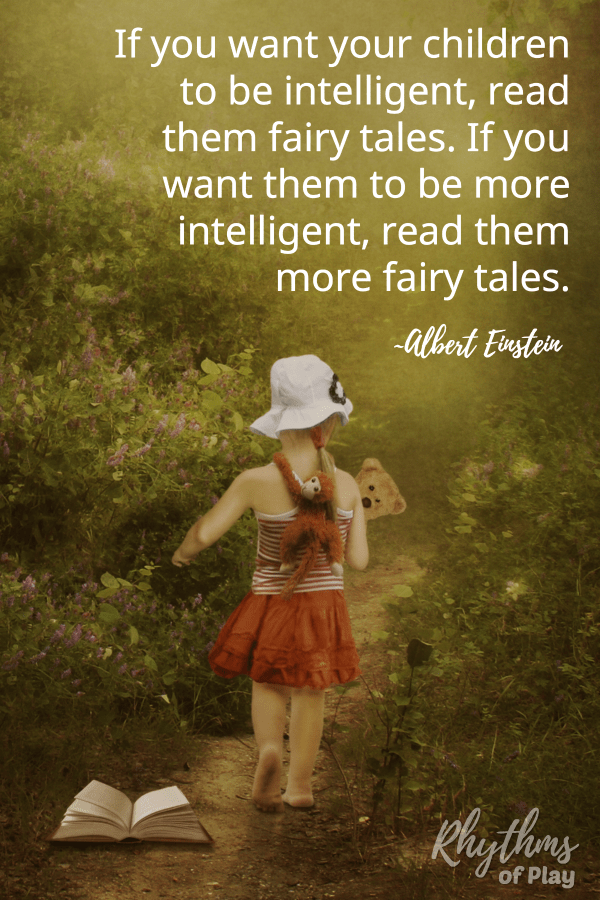
Related: Best Positive Discipline Books for Parents and Educators
Fairy Tales in Education: How Do Fairy Tales Help Children Learn?
Storytelling and rhyme form the backbone of early literacy in Waldorf schools and homeschools worldwide. Rudolf Steiner, the founder of Waldorf education, used fairy tales in education to help our children develop into emotionally whole, intelligent, and creative human beings.
“The need for imagination, a sense of truth, and a feeling of responsibility–these are the very forces which are the very nerve of education.”
~Rudolf Steiner
Rudolf Steiner’s Thoughts on Fairy Tales, Education, and the development of Intelligence
Steiner believed oral storytelling could strengthen a child’s inner picturing abilities. At the turn of the 19th century, he was known for delivering oral lectures in giant halls (without a seat left and barely room to stand) about the imagination and the development of the mind’s inner eye as being the most essential skills for the development of creative thinking and intelligence. And later he modeled many of his theories of Waldorf or Steiner Education around these same ideas.
“If you have small children and have avoided reading fairy tales to them because you thought they were silly stories made up out of whole cloth, because they might scare your children, because you couldn’t answer their questions about the stories, you are cheating them from learning about what it is to be a human being. You are shielding them from the great mysteries of life which are preserved in fairy tales specifically to help us understand these mysteries as we mature. Take away fairy tales from your children and they will likely grow up into fine, rational adults living in a desolate world which contains no magic, no mysteries, just one bland thing after another.”
Rudolf Steiner (Founder of Waldorf Education)
Why are fairy tales shared orally in Waldorf education?
Waldorf educators share most fairy tales and stories orally from memory instead of reading from picture books in early education. And teachers in Steiner and Waldorf Schools across the globe still use storytelling to introduce main lessons even today.
Like many myths and folk tales, fairy tales were originally an oral tradition. In other words, fairy tales such as little red riding hood and the wolf were passed down and shared orally from grandparent to grandchild, and teacher to student, from generation after generation until people began to write these legends and stories down.
Likewise, instead of reading from books, Steiner encouraged early childhood Waldorf educators to share these same fairy tales, myths, legends, folk wisdom, and nature tales the same way our ancestors did. They passed them down by telling them to their children and students before they were ever printed onto paper by authors like the brothers Grimm.
So today, the Waldorf kindergarten is filled with oral storytelling, story baskets, and puppet shows. And the children in grades K-12 get to enjoy short plays put on by their teachers and classmates. They also get to go watch the other classes and grades at their school perform too.
Because sharing fairy tales with children from toddlers to teens is one of the ways Steiner was convinced we could educate children to change the world. And if you can’t tell, he, Bettleheim, and Einstein convinced me too.
Related: 7 Reasons to Add the Waldorf Color of the Day to Your Daily Rhythm
Read Aloud Fairy Tales, Illustrations, and the Dark versus Light Dilemma
You may think that dark and scary fairy tales are horrific and unnecessary, cause children to have nightmares, or that providing children with less scary stories would be better. But the truth is that the watered-down, overly illustrated Disney versions of these classic popular fairy tales can not help children begin to imagine or create anything for themselves.
Nor can fairy tale movies or television programs help children develop the roots of self-understanding, in the same way, that the original dark versions made familiar by the brothers Grimm can.
Because believe it or not, most childhood fears typically associated with fairy tales often come from the whitewashed versions of these stories in which the frightening characters (wolf, wicked witch, evil queen, wrathful king, etc.) are NOT adequately overcome.
Are you ready for the good news? A child will only imagine what they can handle. Whew, now doesn’t that feel better? Therefore, children can only create images that they are ready to see in the mind’s eye.
In other words, when fairy tales and other short stories, myths, and fables are shared orally, children get to imagine their own version, and these internally made-up images could never give them nightmares. But instead, will help them grow into whole human beings that are aware of the dark and light aspects of self, what makes us human, and even more importantly what makes them unique.
Why shouldn’t children watch fairy tale movies or television programs?
In addition to recommending that parents share fairy tales and other oral stories with their children. Waldorf educators also encourage parents to help their children abstain from viewing too many television programs, including fairy tales made into movies, for the same reason.
Because as mentioned above, watching pictures on TV and filling a child’s mind with adult images does nothing to help our children develop the ability to imagine and create these images for themselves.
But when we read fairy tales to children, share fables and myths from memory, or make up short stories on the spot, we give children the opportunity to imagine and co-create the world as they want it to be. And that’s pure magic–but there’s more!
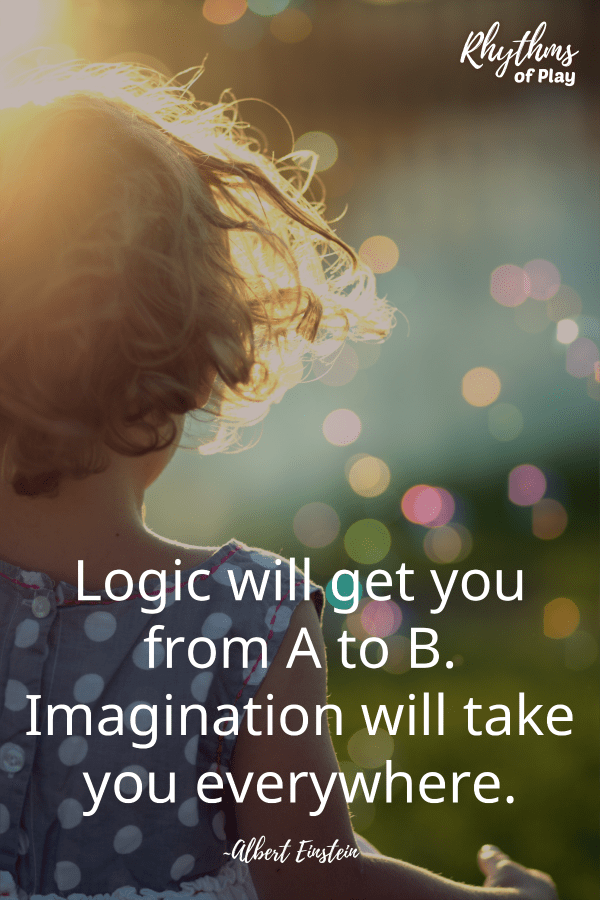
What’s missing from The Movie versions of fairy tales?
Something is lacking from these lighted-up “Dysnified” movie and television versions of children’s fairy tales. And it’s usually something dark and scary. The original oral versions of most fairy tales are constructed psychologically to help young children develop socially and emotionally. So, when you take these parts out, you leave some of the learning behind too!
So why not deliver these stories as initially intended, just like grandma and grandpa did by reading fairy tales aloud to your children, or sharing them from memory if you can? This fact also illustrates one of the primary reasons children are better off hearing fairy tales orally (or reading them on their own), instead of watching images they’re not ready for on a giant television or movie screen.
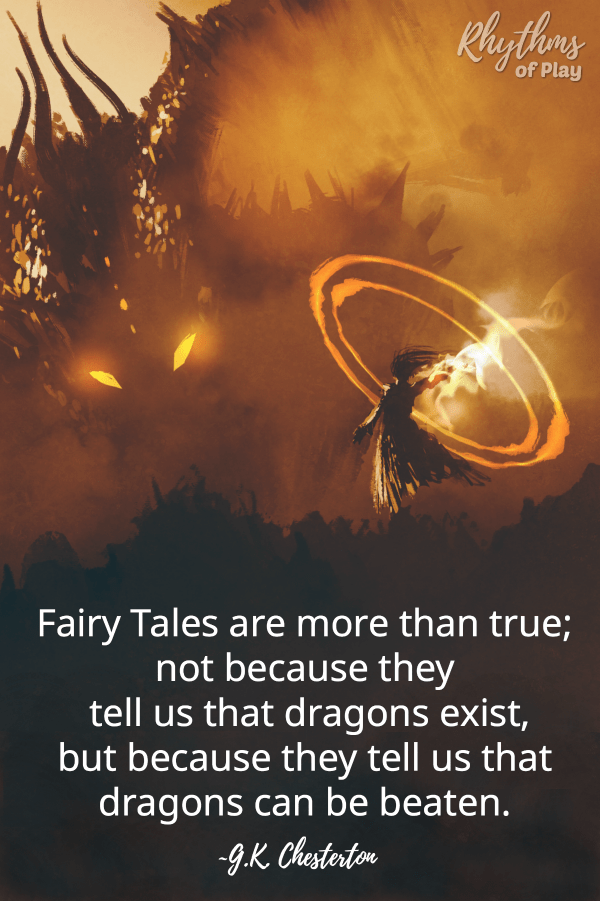
Why are FAiry Tale Books with fewer illustrations better Than Movies and Television Programs?
Please don’t misunderstand, because illustrations are lovely, and some are even fantastic, but they do not allow children to form pictures they invent in their mind’s eye. How can we expect children to develop their imagination, or learn to think creatively when we fill their minds with the images we create?
Listening to fairy tales aloud can help children develop the habit of creating and imagining pictures for themselves. And developing the imagination in this way can help them learn to solve problems, think for themselves, and uncover the mysteries of life. This fact alone should give you pause because so many of our children don’t have this opportunity today.
When we read fairy tales and other books to children with too many illustrations or watch the movie version, we may be forcing them to look at an image that kids are not ready to handle–or that is too scary.
And even worse, seeing these images doesn’t allow children to find their own version of how things look. It’s impossible for children to see their own version of Cinderella’s appearance when we force Disney’s version of the way she looks upon them.
For example, if I asked you to close your eyes right now and imagine Snow White, what does she look like, and what color is her hair? Be honest with yourself when you do this. My guess is that you will see the Disney version of Snow White in your mind’s eye (like I did the first time I was asked this question), not one you imagined for yourself. And that’s a pretty convincing reason, isn’t it?!
Related: Social-Emotional Development Games for Kids
How is Reading Fairy Tales Good for Children?
Fairy tales are rich with vivid metaphors and archetypes that can help children develop into intelligent, whole human beings. The descriptive words work to stir a child’s imagination, while the conflict between dark and light can help children learn to understand themselves. But the real magic happens as children hear the story told aloud again and again. Sound familiar?
Why is it good for Children to hear the same story or fairy tale over and over again?
When children hear a story repeatedly, they work on understanding everything about it. And each time they listen, children strengthen their relationship with the story’s hero as they reconsider the choices they would make each time it is told.
And as they continue to listen, children can fill in the gaps with their creative imaginings and develop mentally and emotionally. Are you starting to see why telling or reading stories repeatedly is a good thing? Ready for another?
Hearing short stories, fairy tales, and other myths, folk tales, and legends told repeatedly can also help build a child’s vocabulary through repetition and context. In other words, children will begin to figure out what some of those strange big words they hear mean within the story’s context.
So each time a story, fable, legend, myth, or fairy tale is told, is another opportunity for children to develop their vocabulary, creativity, critical thinking skills, moral compass, and sense of Self.
And this is why Bettleheim tried to prove this basic truth, Einstein said what he said, and Steiner created an entire philosophy of education around these ideas. Because reading fairy tales aloud to children is a fantastic way to prepare children for formal education and life. And that’s not just magical thinking–but fact.
Related: Household Rhythms: The Power of Routine in the Home
Choosing Age-Appropriate Fairy Tales for Kids
In many fairy tales, the main character follows the classic “Hero’s Journey.” And thus is often faced with a “problem” that must be “solved” or “confrontation” with something “dark or evil.” An example would be the evil stepmother and stepsisters that Cinderella was forced to face.
So, lighter stories with mild problems, such as “The Three Little Pigs” or “Goldilocks and the Three Bears,” are the best fairy tales for young children such as preschoolers and kindergarteners. In contrast, the dark and scary problems made famous by the Brothers Grimm are more appropriate fairy tales for elementary school-aged children and up.
Best Fairy Tales for Toddlers
Simple nursery rhymes, nature tales, meaningful picture books with simple illustrations, and short stories are best for babies and toddlers, or children under three years of age. Please see our recommendations in the next section.
A short story about nature, elves, magic boots, or a frog prince made up by mom, or dad is perfectly fine. Toddlers and preschoolers do not yet have an imagination developed enough to handle fairy tales with complex imagery and scary themes.
There is no need for dark imagery at this age because the young child is not mentally or emotionally mature enough to handle those imaginings. If you are not that fond of making up your own stories, try reading or memorizing a few of the wonderful stories found in Tell Me a Story, one of our family favorites!
The Best Fairy Tales for Preschoolers and Kindergarteners
Preschool and kindergarten-aged children between 3-6 years old can begin to be introduced to myths, folk stories, and fairy tales with simple, light-hearted themes and “happily ever after” endings. Please see the suggested fairy tale books for preschoolers and kindergarteners in the next section.
Best Fairy Tales for Elementary-Aged Kids
When children enter elementary school, at around age 6 or 7, they are ready to hear fairy tales with darker storylines and more difficult struggles, like those found in the original Grimm fairy tales. Please see our favorite fairy tales for elementary school-aged children in the next section.
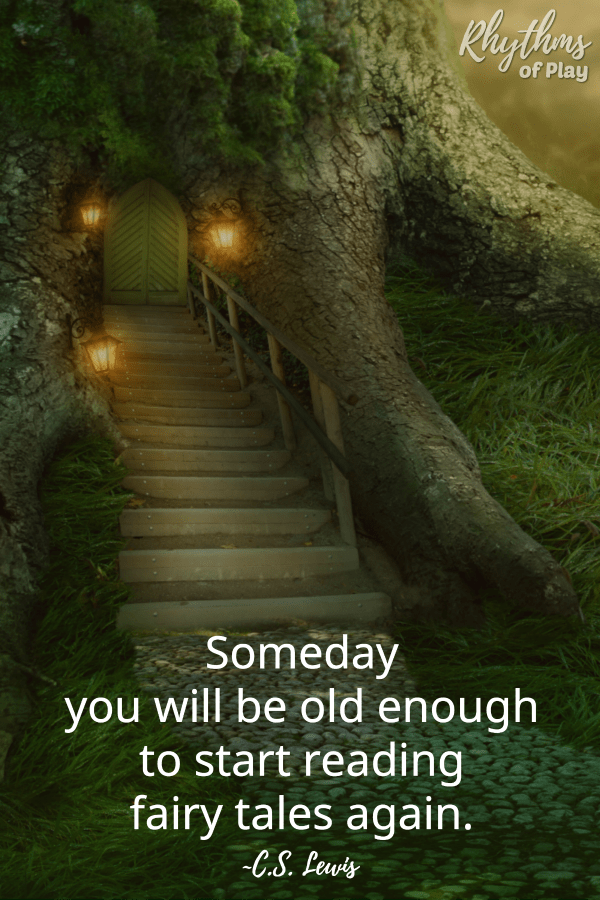
Related: Magical Waldorf Alphabet Books for Kids
Best Fairy Tales for Children: Recommended Editions and Collections
Although many of these myths, fables, stories, and fairy tales come as individual books, we recommend complete collections of fairy tales for kids in your home or school library. The single volumes and little golden books are sweet for young children, but they will not serve our children’s development over time.
Children that are elementary school-aged and up are better off hearing the original versions of fairy tales, with minimal illustrations, to stir their imaginations and encourage the development of the psyche.
In other words, reading fairy tales aloud to children can lead to a higher gain in creativity and emotional intelligence. Both of which lead to the development of knowledge over time. Click on the title of each book to learn more about it. If you click to purchase, Rhythms of Play may earn a small commission at no extra cost.
1. The Real Mother Goose for Babies, Toddlers, Preschoolers, and Young Elementary-Aged Children.
Although they are not fairy tales, Mother Goose rhymes form an essential piece of childhood and pre-literacy, so we recommend starting with them. The simple rhythmic verses in The Real Mother Goose can help prepare young children for the more complex characters and themes found in fairy tales.
We recommend starting with Mother Goose rhymes at birth. Your baby may not understand what you are saying, but the rhythms and rhymes are able to work their pre-literacy magic on an infant’s brain–no comprehension needed!
The “Real Mother Goose” is filled with a long-told collection of rhymes written as told and passed down from generation to generation by grandmothers and grandfathers since the days of old. But feel free to skip any that you don’t like.
And be prepared to read this book several times over several months. There may even be a time when it is all your child wants to hear, as it was for our daughter. But don’t worry; it will not last forever.
I promise that this too, shall pass, and your child will benefit immensely from the experience of hearing these rhythms and rhymes repeated over and over again. I have read it so many times I know it by heart and can recite it page by page on a road trip. True story!
2. Aesop’s Fables for Preschoolers, Kindergarteners, and Elementary-Aged Children.
Fables are short stories that teach moral lessons. A few of Aesop’s most well-known fables include; The Tortoise and the Hare and The Goose That Laid the Golden Egg.
Recommended Aesop’s Fables Edition
The Classic Treasury of Aesop’s Fables – This edition of Aesop’s fables has 20 classic fables to share with preschoolers and kindergarteners.
“Get in step with the colorful animals that race, waddle, and leap through these pages! From a fast-footed monkey to a two-timing fox, each creature has a story to tell and a moral to teach. These famous tales tickle the imagination and teach simple truths, ones that children and adults face every day.”
3. Hans Christian Andersen’s Fairy Tales for Preschoolers, Kindergarteners, and Elementary-Aged Children.
Andersen’s initial attempts at writing fairy tales were revisions of stories he heard orally as a child. Later, Hans Christian Andersen adapted his stories into something that was his own, unlike the Grimm brothers, who were most known for collecting and retelling the stories that they had heard as children.
Today, his stories surrounding the unconscious and the transformation of the true self have become roadmaps for our children on their path toward self-discovery. Some of Hans Christian Andersen’s most famous fairy tales include:
- The Ugly Duckling,
- The Little Mermaid,
- The Emperor’s New Clothes,
- The Snow Queen,
- Thumbelina,
- The Princess and the Pea–and many more!
Favorite Hans Christian Andersen Fairy Tale Collections:
An Illustrated Treasury of Hans Christian Andersen–Recommended Limited Edition with Illustrations for Younger Children (Ages 4 or 5 and up)
“Hans Christian Andersen’s classic tales of foolish emperors, lonely mermaids, icy queens and clever princesses have delighted children and adults alike for nearly two centuries. The stories’ unique magic and wonder make them essential reading for any childhood.”
Hans Christian Andersen Complete Fairy Tales– Recommended Complete Edition for Older Children (Ages 6 or 7 and up)
“A great book of bedtime stories or for rainy day reading, as there are both short and long anecdotes included. The attached bookmark ribbon ensures you’ll never lose your place as you wander through the imagination of one of the most popular children’s writers of all time. Curl up with this collection of classics and lose yourself in childhood memories.”
4. Grimm Fairy Tales for Elementary-Aged Children, Tweens, and Teens.
Grimm’s Fairy Tales is a collection of orally shared tales and fables written by the famous brothers Grimm–Jacob and Wilhelm Grimm. First published in 1812, this fairy tale collection included 86 fairy tales known as “Children’s and Household Tales.” Today the complete Grimm’s fairy tales collection has 216 stories!
The Grimm brothers were not the original authors of the fairy tales in their complete collection. Instead, they collected and wrote down each of the fantastical stories and fables they heard. Before these famous stories were published as Grimm’s fairy tales, they were passed down orally from grandmother to grandchild, from generation to generation.
Although a few of the original titles have been changed to reflect the modernized versions of these classic fairy tales, some of the Grimm brothers’ most famous fairy tales include; Snow White, Little Red Riding Hood, Hänsel and Gretel, Cinderella, Sleeping Beauty, and Rapunzel.
Recommended Edition of Grimm’s Complete Fairy Tale Collection:
Grimm’s complete collection of Fairy Tales – Pantheon Addition is the translation that Waldorf educators prefer and the copy we recommend most. This comprehensive volume of the Grimm fairy tales contains all 216 stories collected and written by the Brothers Jacob and Wilhelm Grimm. This edition of the classic Grimm’s fairy tales is a treasure trove of engaging stories you and your child can read and treasure long past childhood.
The stories of magic and myth gathered by the Brothers Grimm have become part of the way children—and adults—learn about the vagaries of the real world. Cinderella, Rapunzel, Snow-White, Hänsel and Gretel, Little Red-Cap (Little Red Riding Hood), and Briar-Rose (Sleeping Beauty) are only a few of the more than two hundred enchanting characters included in this volume. The tales are presented just as Jacob and Wilhelm Grimm originally set them down: bold, primal, just frightening enough, and endlessly engaging.
Other Myths, Folk Tales, and Short Stories Children Will LOVE!
There are several collections of children’s literature that can be used in the same way as fairy tales to teach, prepare for learning, and inform, including myths, folk stories, and adventures. There are so many in fact, that it’s hard to know which fairy tales and short stories are best to read aloud to your children. So, we wanted to share our favorite versions of these wonderful tales with you.
A Treasury of Children’s Literature – This is an excellent starter fairy tale edition for young children. It contains a few rhymes, stories, legends, fables, and fairy tales from our above recommendations. We think this book of short stories for children is a perfect starter collection. It has limited illustrations for our family looking for a book of fairy tales for toddlers, preschoolers, and kindergarteners. We began reading our daughter the fairy tale stories in this book when she was halfway through her third year.
Celtic Tales: Fairy Tales and Stories of Enchantment from Ireland, Scotland, Brittany, and Wales – The traditional stories of Ireland, Scotland, Brittany, and Wales transport us to the fantastical world of Celtic folklore.
An Illustrated Treasury of Scottish Folk and Fairy Tales – Award-winning children’s author Theresa Breslin has collected the best-loved tales and enchanting stories from all over Scotland in this collection of folk and fairy tales.
Related: Gratitude Books for Children that Inspire Thankfulness
The Best Read-Aloud Fairy Tales for Children
Reading fairy tales, folk tales, myths, and legends aloud to our children has many benefits. First, they can aid child development by helping children develop into creative, intelligent, and emotionally whole human beings.
Fairy tales read aloud in the lap of a caring adult can instill a love of reading, improve vocabulary, develop imagination, increase intelligence, and more! You may also like this collection of children’s books that teach important life lessons.
Learn more about Rhythms of Play HERE!
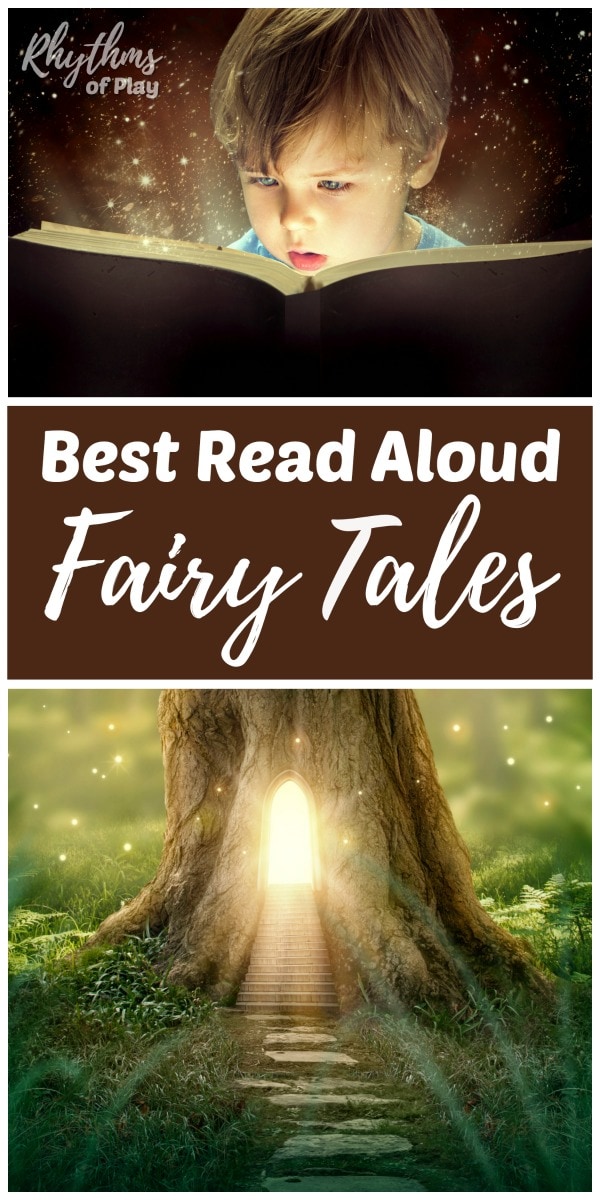

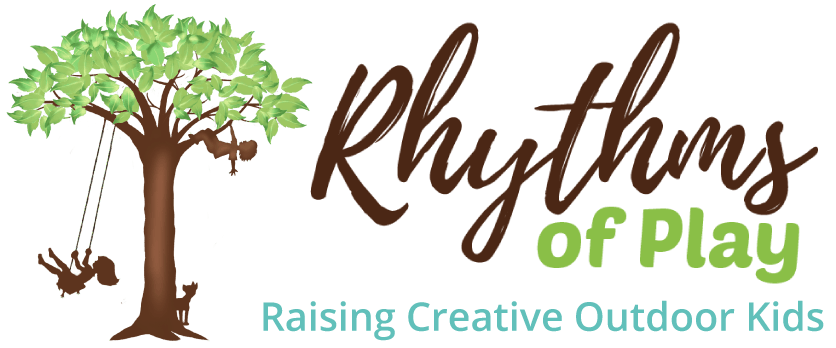

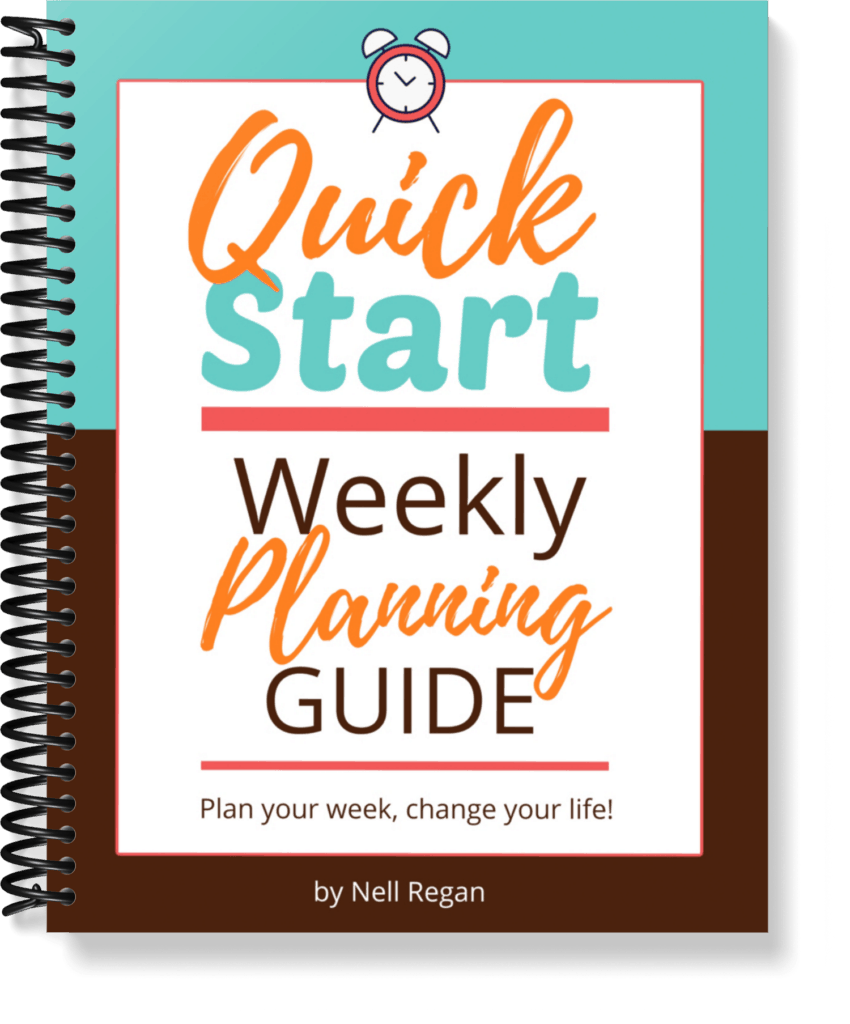
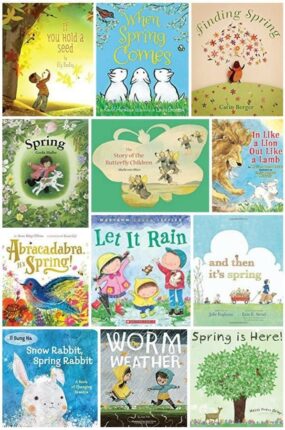

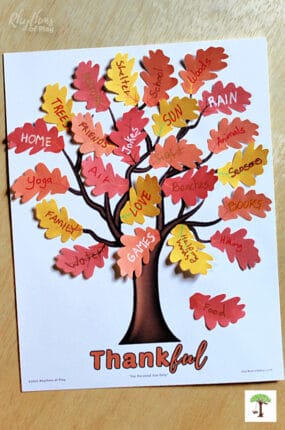
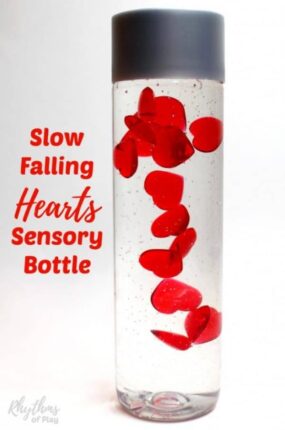
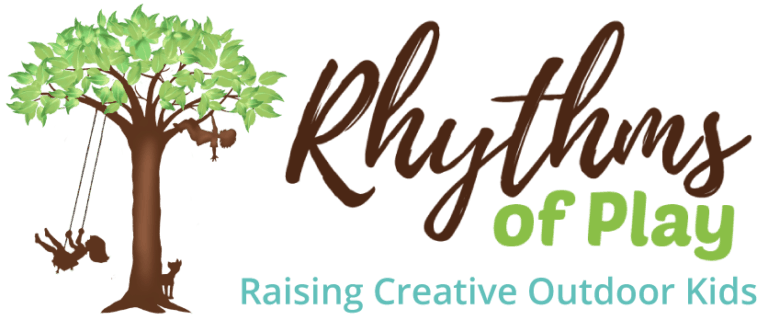
I’m looking for the poster with below quote and girl walking on path with teddy.
“If you want your children to be intelligent, read them fairy tales. If you want them to be more intelligent, read them more fairy tales.” ❤️ ~Albert Einstein
Hi Nadia! I do not have a poster made of the photo of the girl walking on the path with her teddy and the quote from Albert Einstein, but it is a fantastic idea! I will see if I can it made into a poster.
Hi,
I was looking to purchase the poster of the little girl reading to the sitting dragon. Who is the artist?
Thank you,
Donnalynn
Hello Donnalynn,
Great question, unfortunately, I don’t know who the artist is. It is a stock image that I purchased. I will do a bit of research to see if I can find out and get back to you.